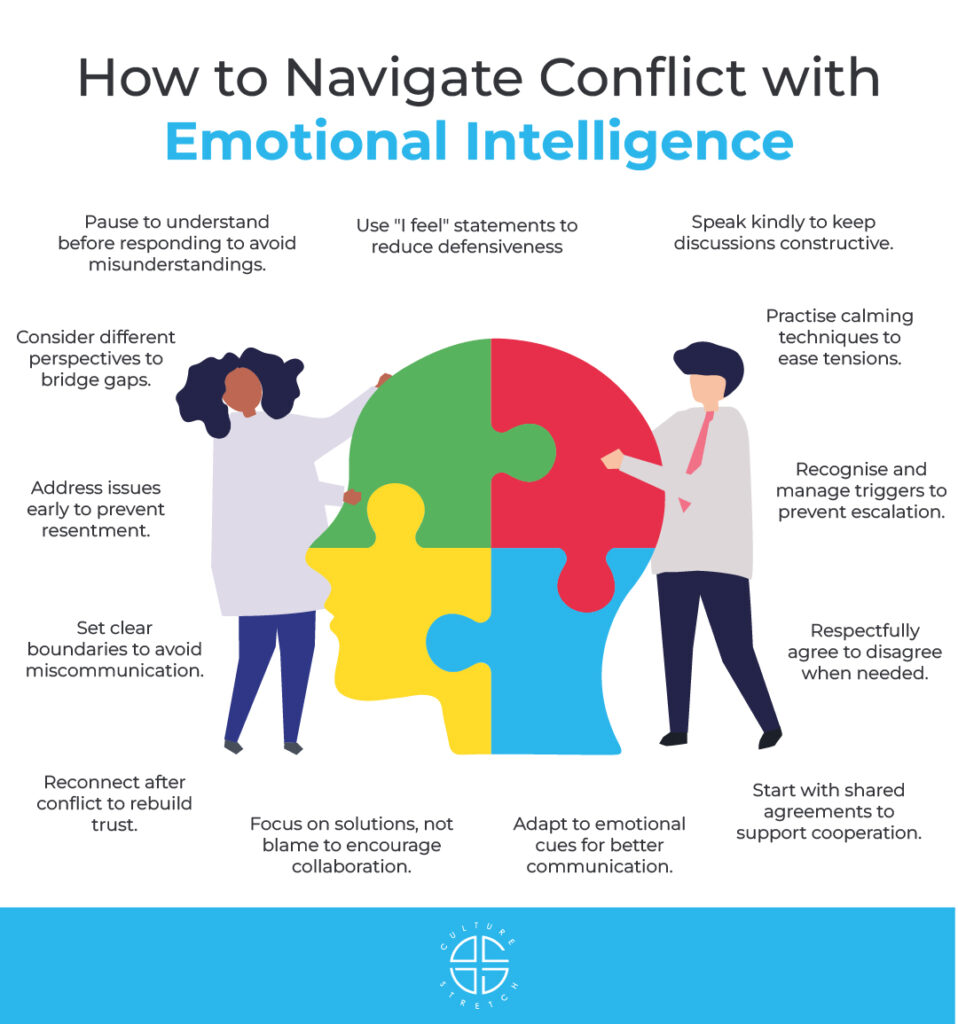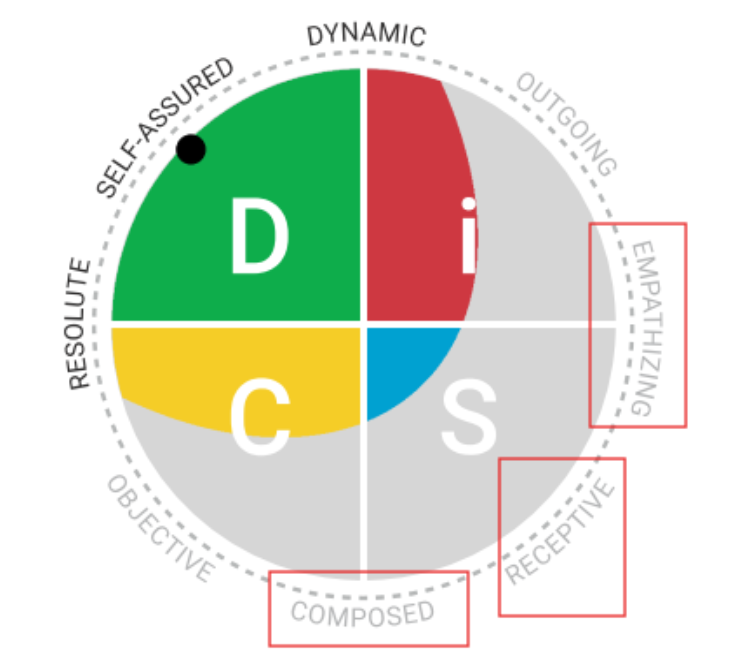It’s not a secret that conflict is an inevitable part of any workplace, especially in high-pressure environments where there is little collaboration and silo teams are present. As a 54-year-old businesswoman with extensive experience in leadership roles, I’ve had my fair share of conflicts. Also being a D-style in DiSC, I appreciate and understand that this personality style comes with its challenges, subsequently, my early career saw me head into more conflict than was healthy, having never been one to walk away from a challenging topic or situation. Inevitably this led to a more negative experience than a positive one at times. Over the years, I’ve learned to handle conflict in a way that doesn’t escalate tensions, using Emotional Intelligence (EQ) to dissipate the situation.
Understanding Conflict
Conflict arises from differences—differences in opinions, goals, or values and whilst there is a need for productive conflict in the workplace, in a fast-paced, dynamic environment, these differences can quickly turn into disputes if not managed properly. Unresolved conflict and destructive behaviours can lead to decreased morale, reduced productivity, high attrition and a toxic work culture.

Emotional Intelligence: A Key to Resolving Conflict
Emotional Intelligence involves self-awareness, self-regulation, motivation, empathy, and social skills. It’s about recognising, understanding, and managing our own emotions, as well as those of others. In conflict situations, Emotional Intelligence enables us better understand our emotions and navigate them in a more constructive manner, turning potential crises into opportunities for growth.
My Journey with Conflict and EI
As a D-style leader, I’m direct and decisive, and whilst I don’t enjoy conflict of any type, it can be said that I won’t shy away from confrontation if it is necessary to get to a better outcome for those concerned. Early in my career this lead to me being overlooked for promotions and opportunities to progress and I often found myself being the spokesperson for situations that really weren’t to tackle.
Being direct, impulsive and outspoken often led to escalated conflicts. Over time, I realised that while my approach could resolve issues quickly, it didn’t always foster positive relationships. I began to develop my EQ skills, focusing on empathy and active listening as a priority. One memorable instance, when a heated disagreement arose during a meeting. Instead of imposing my view as I would have normally, I took a step back, listened to each perspective, and acknowledged my emotions involved and those of my colleagues.
This approach, whilst not natural for me, was the better route, using emotional intelligence to become more self-aware, not only resolved the issue but also strengthened team cohesion rather than creating dysfunction.
Strategies for Leaders
Understanding my “Go-to”
In challenging social or emotional situations, our mindset plays a huge part. For my DiSC style, the mindsets that are truly within my comfort zone are Self-assured, Dynamic and Resolute. I’m not naturally receptive to others’ views and ideas if I feel I have the answer to take the plan forward, and find it difficult to stay composed. Empathising requires me to slow down and listen actively, which again isn’t my natural pace or intention.

Being aware of these mindsets through Wiley’s Agile EQ has helped me to understand my natural behaviours and allowed me to practise becoming more agile when an emotional or social situation calls for it both inside and outside of the workplace. Acknowledging our emotions and understanding what drives them is the first step to managing our reactions more effectively and for me, the benefits of being more empathising, actively listening and remaining more composed when I have input to give, has been monumental.
Tiny Steps
Develop Self-Awareness: Reflect on your conflict style, the behaviours you display in conflict and the triggers that take you there. What happened and what was your most natural reaction, make a note of these. Understanding your own emotions is the first step in managing them.
Enhance Empathy: Strive to understand others’ perspectives and emotions. Empathy can diffuse tension and pave the way for constructive dialogue.
Communicate Effectively: Use clear, assertive, and non-defensive verbal and non-verbal communication. Focus on the issue, not the person.
Conflict Frameworks: Frameworks like Everything DiSCs Productive Conflict helps you to reframe negatives thoughts and behaviours using CBT technique. Whilst the Thomas-Kilmann Conflict Mode Instrument can provide structured approaches to embracing conflict through positive change.
The Benefits of Effective Conflict Management
Managing conflict effectively can lead to stronger relationships, psychological safety, improved performance, and enhanced innovation. When team members feel heard and valued, they are more likely to collaborate and contribute their best ideas.
Developing Emotional Intelligence is crucial for any leader aiming to manage conflict effectively. By honing our EQ skills, we can turn conflicts into opportunities for growth and innovation. I would encourage any leader to reflect on your conflict management style and behaviours and then commit to enhancing your Emotional Awareness as a first step.



